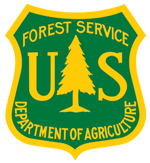NRCS Conservation Practices and Materials
UTRB Imperiled Aquatic Species Conservation Strategy [2015 presentation]
pdf copy of the UTRB Imperiled Aquatic Species Conservation Strategy briefing slides for team discussion on proposal to use UTRB strategy as the foundation upon which to pursue a landscape conservation design (LCD) project within the AppLCC. (2 slides/page). Note the slides with the (H) indicate those that are Hidden and not actually presented. (These are provided as background resources to the speaker.)
Pennsylvania Energy Impacts Assessment
In 2010, TNC scientists focused on projections of how new energy development could impact natural habitats in Pennsylvania to shape strategies that avoid or minimize those impacts.
AMJV Partnership Successes for Song Birds and Game Species
The benefits from managing habitat for game species and managing habitat for songbirds are not mutually exclusive. Creating and enhancing a variety of habitats supports a diversity of wildlife and activities, from birdwatching to hunting.
Enhancing the Climate Resilience of America’s Natural Resources
The President's Climate and Natural Resources Priority Agenda is the result of an interagency process to inventory and assess current policies, programs, and regulations related to climate change adaptation. The Agenda builds upon the robust climate change adaptation work already accomplished by Federal agencies and identifies significant actions moving forward. It specifically mentions how Federal agencies working to address ecosystem management issues through LCCs and other multi-stakeholder bodies will work with partners to select flagship geographic regions for which they will identify priority areas for conservation, restoration, or other investments to build resilience in vulnerable regions, enhance carbon storage capacity, and support management needs. Within 24 months, these agencies and their partners will have identified and mapped the initial list of priority areas within each of the selected geographic landscapes or regions.
National Fish Wildlife and Plants Climate Adaptation Strategy strategies and goals
National Fish Wildlife and Plants Climate Adaptation Strategy goals, strategies and actions from Chapter 3 of the document
USDA Provides $328 Million to Conserve Wetlands and Farmland, Boost Economy
Agriculture Secretary Tom Vilsack announced today that $328 million in conservation funding is being invested to help landowners protect and restore key farmlands, grasslands and wetlands across the nation. The USDA initiative will benefit wildlife and promote outdoor recreation and related sectors of the economy.
Copper Creek In-Stream Habitat Restoration Project
This project improved riparian zones, water quality, appropriate sediment flows and restoring physical habitat for multiple listed aquatic species in the Copper Creek watershed, within the Upper Tennessee River Basin. (Photo: The low water bridge that was removed and replaced with a new bridge that spans the river. )
Copper Creek In-Stream Habitat Restoration Project
This project improved riparian zones, water quality, appropriate sediment flows and restoring physical habitat for multiple listed aquatic species in the Copper Creek watershed, within the Upper Tennessee River Basin.
Strategic Habitat Conservation - Final Report of the National Ecological Assessment Team
\We envision the FWS working collaboratively with partners to develop and implement a landscape approach to habitat conservation, leading to what we term strategic habitat conservation. Success will depend on how quickly and effectively our organizational approach evolves, including steps to better communicate with and work alongside our partners.
Strategic Habitat Conservation - Final Report of the National Ecological Assessment Team
\We envision the FWS working collaboratively with partners to develop and implement a landscape approach to habitat conservation, leading to what we term strategic habitat conservation. Success will depend on how quickly and effectively our organizational approach evolves, including steps to better communicate with and work alongside our partners.
First Participants in Conservation Stewardship Program can Renew
Producers with expiring U.S. Department of Agriculture Conservation Stewardship Program (CSP) contracts have from July 11 until Sept. 12, 2014 to renew and add conservation activities that will support their natural resource improvement activities and fine-tune their conservation plans.
Appalachian LCC Data Needs Assessment Final Report
This project was undertaken to evaluate existing datasets for the Appalachian LCC region, package relevant datasets, review of some of the most commonly used conservation planning tools, provide interpretive text and graphics for datasets and tools, and identify data gaps that could improve conservation planning in the Appalachian LCC. Additionally, we reviewed and analyzed State Wildlife Action Plans (SWAP) from 15 states that intersect with the LCC, and corresponded with the SWAP coordinators to get their input on summaries and information on the upcoming 2015 revisions.
AMJV Management Board Meeting
The AMJV Management Board meets twice a year to discuss the major issues, accomplishments, and future direction of the partnership.
Federal Programs Offer Opportunities for Wildlife, Forestry Improvements
For persons interested in performing active management on their property to establish or improve wetlands, riparian (streamside) areas, forest lands, or other upland habitats for wildlife and pollinators, now is the time to request a plan and apply for financial assistance if desired.
NRCS and Forest Service Partner to Improve Forest Health
Agriculture Under Secretary for Natural Resources and Environment Robert Bonnie announced today a multi-year partnership between the U.S. Forest Service and the Natural Resources Conservation Service (NRCS) to improve the health and resiliency of forest ecosystems where public and private lands meet across the nation.
Event Convenes Kentucky Conservationists and Waterways Transportation Industry
On December 12th, the Ingram Barge Company and the Crounse Corporation convened more than 45 representatives from the waterways transportation industry at an event they hoped would serve as a catalyst for future collaborations with The Nature Conservancy throughout the Mississippi River Basin.
Appalachain Landscape Conservation Cooperative GIS Datasets
The Appalachain Landscape Conservation Cooperative Datasets are located in a folder named “AppLCC_USGS_ConicEA_Projection” and each theme has its own folder. Most folders have a layer file for displaying the raster datasets, however if there is more than one raster in the folder, it may be necessary to point the layer to the desired raster each time it is loaded. Also there are a few layer files and one geodataset (NWI) that will only work in ArcGIS 10.x. The layer file with the same name as the raster dataset should work in both ArcGIS 9.x and 10.x. In each case we attempted to download the latest (Spring 2013) revision of the dataset that completely covered the Appalachain LCC.
Interpretive Text and Graphics for AppLCC Web Portal (data)
This document presents map images and text that describes the data that can be posted to the AppLCC web portal. The arrangement follows the layout of the Appalachain Landscape Conservation Cooperative GIS Datasets.
2013 SN Portfolio (Full Report)
In February 2013, almost 50 experts from a wide range of technical background in both natural and social sciences, as well as geographic expertise across the entire region, volunteered to participate in the annual review of the Appalachian LCC Science Needs Portfolio. 2013 marked the first revision of the Portfolio.
Climate Change
2013 SN Portfolio: Mission to create an effective adaptation strategy for climate change based on the best available science.






















